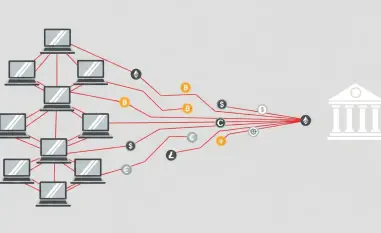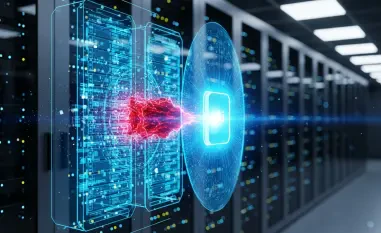In a digital landscape increasingly plagued by cyber-espionage, the Russian state-sponsored hacking group APT28 has intensified attacks on Western companies. Known for sophisticated tactics and affiliations with Russia’s military intelligence, the GRU, APT28 has targeted logistics and technology firms in America and Europe over the past couple of years. With these companies providing essential aid to Ukraine, the hacking group’s efforts highlight the geopolitical tension and the dynamic challenges facing cybersecurity defenses today. The persistence of APT28’s campaigns underscores the urgent need for organizations to fortify their security strategies, staying one step ahead of potential vulnerabilities.
Rise in Cyber-Attacks
Impact on Logistics and Tech Firms
APT28 has focused its attention on a wide array of sectors integral to Western infrastructure and support for Ukraine. These include defense contractors, IT service companies, and air traffic management firms. By infiltrating these critical sectors, the group aims to disrupt aid delivery and gather intelligence. Tactics employed by APT28 to achieve these objectives are varied, ranging from brute force credential guessing to more insidious techniques such as spear phishing. Exploiting known vulnerabilities in software like Outlook and Roundcube, and even capitalizing on weaknesses in public systems such as corporate VPNs and WinRAR, are part of their arsenal. This multifaceted approach not only demonstrates the group’s technical prowess but also its ability to adapt to security measures, posing a significant threat to organizations across the Western world.
The focus on logistics highlights APT28’s strategic goal of undermining efforts that support Ukraine against Russian aggression. By targeting companies directly involved in aid transportation, the group seeks to delay or halt critical assistance. These attacks not only jeopardize the targeted businesses’ operations but also strain international relations and reduce effective aid. Consequently, the focus on logistics underscores a broader objective to disrupt Western efforts and strategic interests. The rising sophistication of cyber threats necessitates an equally advanced and comprehensive cybersecurity approach to mitigate risks.
Broader Implications of Surveillance
APT28’s activities extend beyond corporate espionage into extensive surveillance operations, particularly in regions surrounding Ukraine. Engaging in the hacking of private and municipal IP cameras, the group tracks material movements across borders. This enables intelligence gathering on a scale that supports potential military strategies. Such surveillance efforts demonstrate the group’s expansive capabilities, allowing real-time data collection from previously unmonitored sources. This form of cyber-intelligence accelerates decision-making processes related to military and strategic actions, indicating the vast reach of modern cyber warfare techniques.
Moreover, these surveillance activities highlight the growing trend of using cyber tools for intelligence collection, pushing traditional boundaries in modern espionage. Espionage efforts once reserved for government agencies are now accessible through breaches in civilian infrastructure, raising considerable security concerns. The ability to track movements in real-time via hacked cameras offers a tactical advantage and enhances military readiness in highly sensitive geopolitical contexts. As the sophistication of these strategies increases, so does the necessity for defense mechanisms capable of countering them effectively.
Enhancing Cybersecurity Measures
Proactive Defense Strategies
The evolving methods employed by APT28 require Western firms to adopt proactive cybersecurity measures to defend against these relentless attacks. Industry and cybersecurity experts emphasize incorporating multi-factor authentication systems to ensure that access credentials are protected by additional verification layers. This method reduces the likelihood of unauthorized access by requiring multiple forms of identification, thus enhancing security. Furthermore, keeping software and systems updated with the latest security patches can prevent exploitation of known vulnerabilities.
Shifting to a zero-trust security model is another recommended strategy; this approach focuses on internal threat prevention by segmenting network access and isolating sensitive data. In contrast to traditional perimeter-based security models, zero-trust assumes potential breaches will occur, thereby limiting access to sensitive information and building layered defenses within networks. By treating every access request as potentially malicious, organizations can minimize exposure and better contain breaches. This paradigm shift is essential for maintaining robust defenses capable of thwarting sophisticated cyber-attackers like APT28.
Adaptive Security Frameworks
Adopting advanced security frameworks is critical for adapting to an increasingly complex cyber threat landscape. Leveraging identity verification solutions is vital for confirming user legitimacy, ensuring only authorized personnel have access to sensitive systems and data. Implementing comprehensive security frameworks, including regular audits and threat monitoring, can detect vulnerabilities before they are exploited. Emphasizing network segmentation, where distinct zones are created within networks, allows organizations to contain breaches and significantly reduce the internal movement of malicious actors.
Regular assessments of security infrastructure ensure compliance with ever-changing standards and provide opportunities for improvement. Training employees to recognize phishing attempts and other social engineering tactics further enhances security protocols by reducing vulnerabilities from human error. Enhanced security frameworks allow for continuous evaluation and adaptation, essential for preempting evolving threats. Continuous vigilance and modernization of security practices maintain the integrity of systems, preserving the confidentiality and operability of organizations in a high-stakes cyber environment.
Takeaways on Cybersecurity Challenges
In the current digital environment, cyber-espionage has become increasingly prevalent, with the Russian state-backed hacking group APT28 ramping up its attacks on Western businesses. APT28, renowned for its advanced techniques and connections to Russia’s military intelligence, the GRU, has launched targeted campaigns against logistics and tech companies in both the United States and Europe in recent years. These firms are crucial in providing support to Ukraine, which underscores the geopolitical tension and the ever-evolving challenges in cybersecurity today. APT28’s relentless efforts shine a spotlight on the pressing need for organizations to bolster their security measures. Staying one step ahead of potential threats is essential to guard against the sophisticated strategies employed by such hacking groups. In a world where cyber threats continuously evolve, firms must remain vigilant, continually updating their defenses to protect sensitive data and maintaining operational integrity amid geopolitical turbulence.













